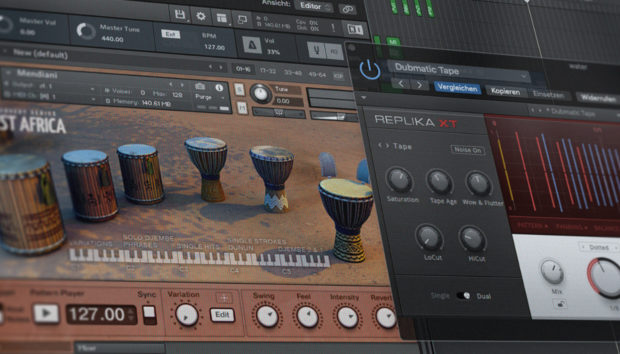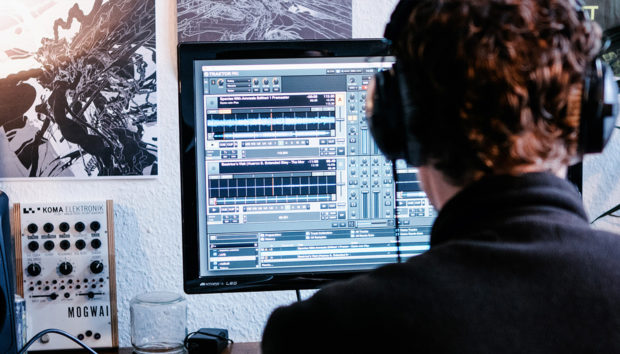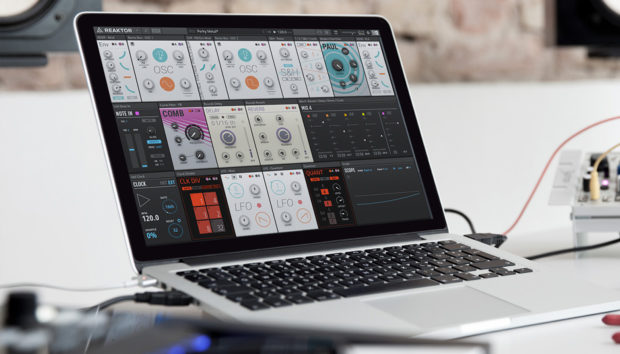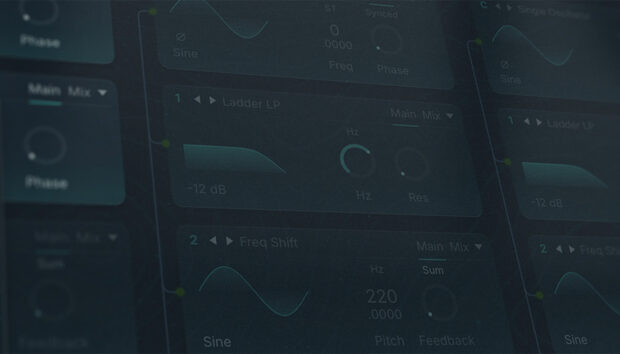
House music thrives on its groove, with that human swing adding energy in the studio and on the dance floor. But DAW-based drum programming can sometimes lack authenticity, resulting in robotic grooves that fall short of what a producer wants. That’s why producers like Saraga turn to tools like Maschine to inject creativity and authenticity.
Saraga exemplifies the success achievable with standout drum grooves in house music. With the launch of his Stardust record label and debut single “God Is Good” in late January, it’s the perfect time to explore how he leverages Maschine to create infectious grooves.
In this interview, we discuss his unique approach to drum programming, keeping drums fresh and alive, layering techniques, and much more, all while using Maschine as the central hub. The results speak for themselves, with support from top names like Damian Lazarus, Marco Carola, and Jamie Jones.
Jump to these sections:
- Approaching drum programming with Maschine
- Keeping drums fresh and not repetitive
- Maschine’s best feature
- Layering drums in Maschine
- The best drum kits in Maschine
- Essential advice for producers struggling with drums
With a stellar 2024 behind him, 2025 promises to be even better. Check out more about Maschine below before we dive into our interview with Saraga on crafting top-tier house music grooves.
What’s your approach to drum programming in house music? Do you start with a groove in your head or let Maschine guide you?
I usually go two ways with drum programming.
Sometimes, I already have a groove or rhythm in my mind, and I know the kind of energy I want for the track. When that happens, I go straight to Maschine, pick the drums I know will work, and start building the idea. It’s like shaping something I already feel inside.
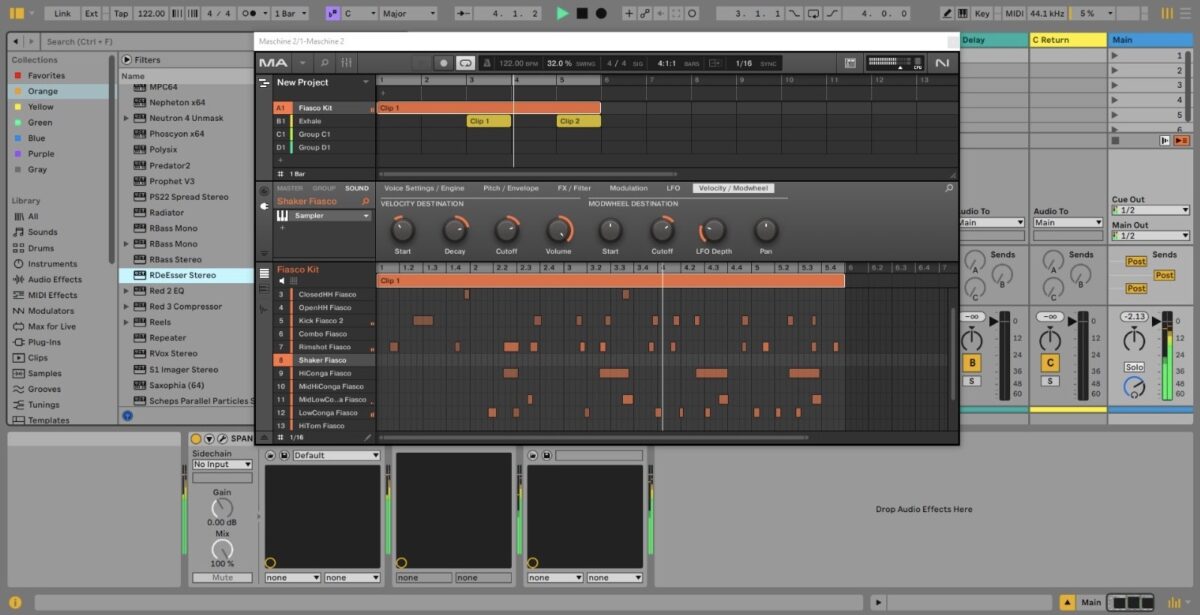
Other times, I don’t have a clear idea, and I just let Maschine surprise me. I start trying out different sounds and messing around with the pads.
Pro tip from Saraga: Don’t underestimate sound design for percussive elements. Turn unexpected sounds – such as sampled environmental noises, vocal chops, or even glitch effects – into rhythmic layers using Maschine’s sampler and effects.
House music lives and dies by the groove. How do you keep your drum programming fresh and exciting without losing that dancefloor energy?
For me, the groove is everything in house music.
I like to mix things up by using drums and sounds that aren’t typically labeled as “house.” For example, I’ll pull drum samples from hip-hop or afro house kits, and I’ll use live acoustic hi-hats or snares. These kinds of elements add a fresh and unique vibe to the groove.
To keep the energy alive, I experiment with subtle variations – shifting a percussion sound or adjusting the swing slightly. It’s about building layers that create tension and movement, giving the groove personality and energy that stands out on the dancefloor.
Pro tip from Saraga: Experiment with Maschine’s effects, like transient shaping or saturation, to give your drums extra punch. These tools can take your rhythm from good to great by enhancing its character and energy.
What’s your favorite feature in Maschine?
One of my favorite features is the step sequencer.
It’s super visual and easy to use, so I can quickly try out patterns and see how they work. It’s great for experimenting and building grooves layer by layer. I also love the way Maschine’s pads feel – playing live on them makes everything more natural and human.
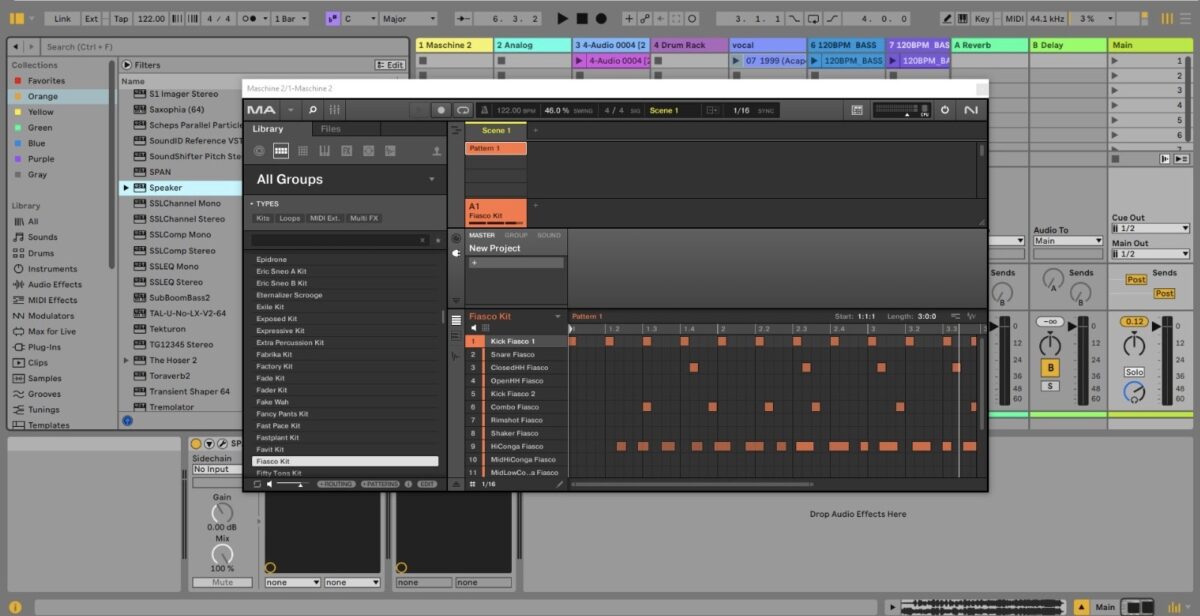
Another feature I use is the Humanize feature. It helps make my drums sound more alive by adding small random changes to timing and velocity. When you’re making house music, those little imperfections make a big difference. It gives the track more groove and makes it feel less robotic.
Pro tip from Saraga: Use the pads to play your beats live – it adds a human feel that’s hard to program. I think the Maschine gives producers freedom, instead of creating a groove in software that puts you in a box with your workflow. The Maschine opens up a lot of possibilities when starting a track.

When you’re layering drum sounds in Maschine, how do you avoid things getting too muddy or cluttered?
To keep my drums clean, I make sure each sound has its own space. In the process of programming, I use an EQ to cut out frequencies that don’t need to be there. For example, I remove the low frequencies from snares and toms so they don’t interfere with the kick.
Panning is also important; it spreads the sounds out and makes the mix feel wider.
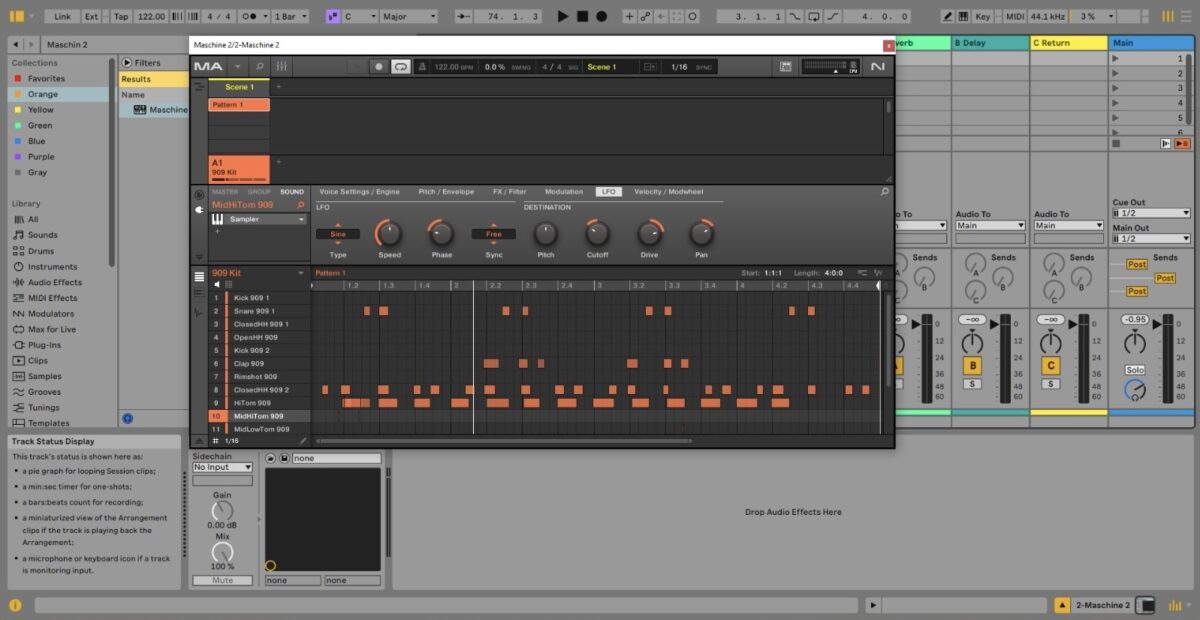
I also pay attention to volume levels and make sure the layers work together. Sometimes, less is more – if something isn’t adding to the groove, I take it out. Another trick I use is to slightly adjust the timing of layered sounds so they don’t hit at the same moment. This helps keep everything clear and funky.
Pro tip from Saraga: Shape your sounds with an envelope and play around with the decay, attack, and pitch modulation. Adding longer tails and subtle changes can craft textures that are uniquely yours. This adds depth and character to your groove.
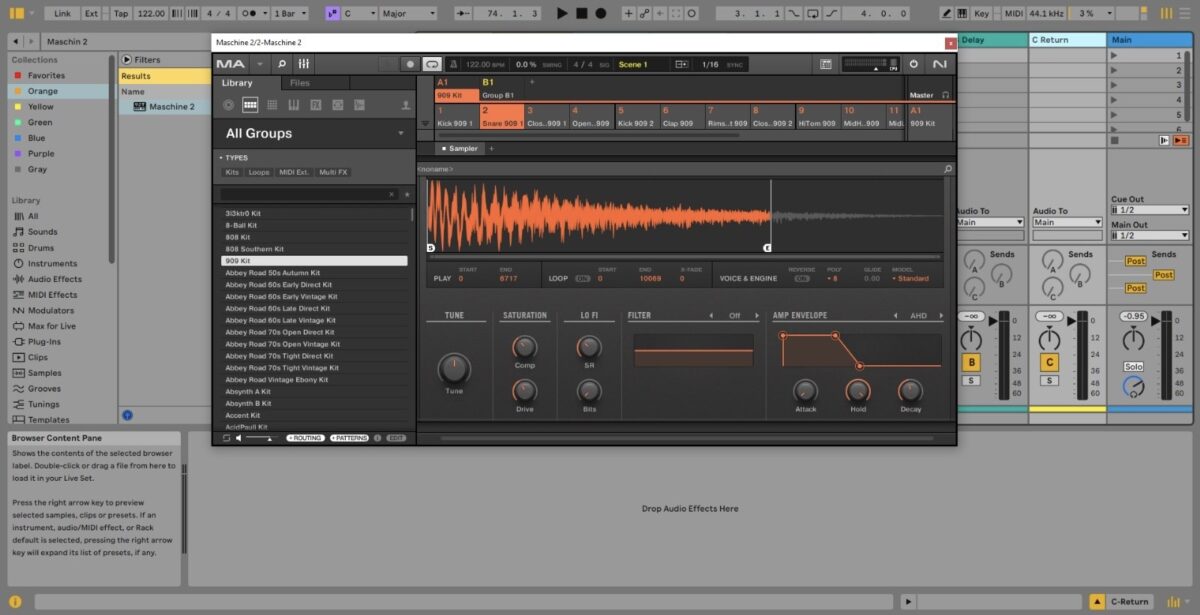
Are there any specific drum kits or samples in Maschine that just scream “house music” to you?
You can’t go wrong with the old and good 909 drums, but if I need to pick another one I used recently the ‘Fiasco Kit’ doing the job!
Pro tip from Saraga: Maschine’s Humanize feature is a powerful tool for adding life to your groove. By introducing small, random variations in timing, it helps your beats feel more natural and less mechanical. I recommend using it even across multiple groups to make the groove feel alive and dynamic.
What’s your advice for a producer who struggles to make their drum patterns sound alive?
The best advice I can give is to keep things moving.
Use Maschine’s swing feature to add a bit of groove to your patterns. Don’t try to make everything perfect – small changes in velocity or timing can make a huge difference. Play around with layering sounds, but keep it simple at first and focus on how they work together.
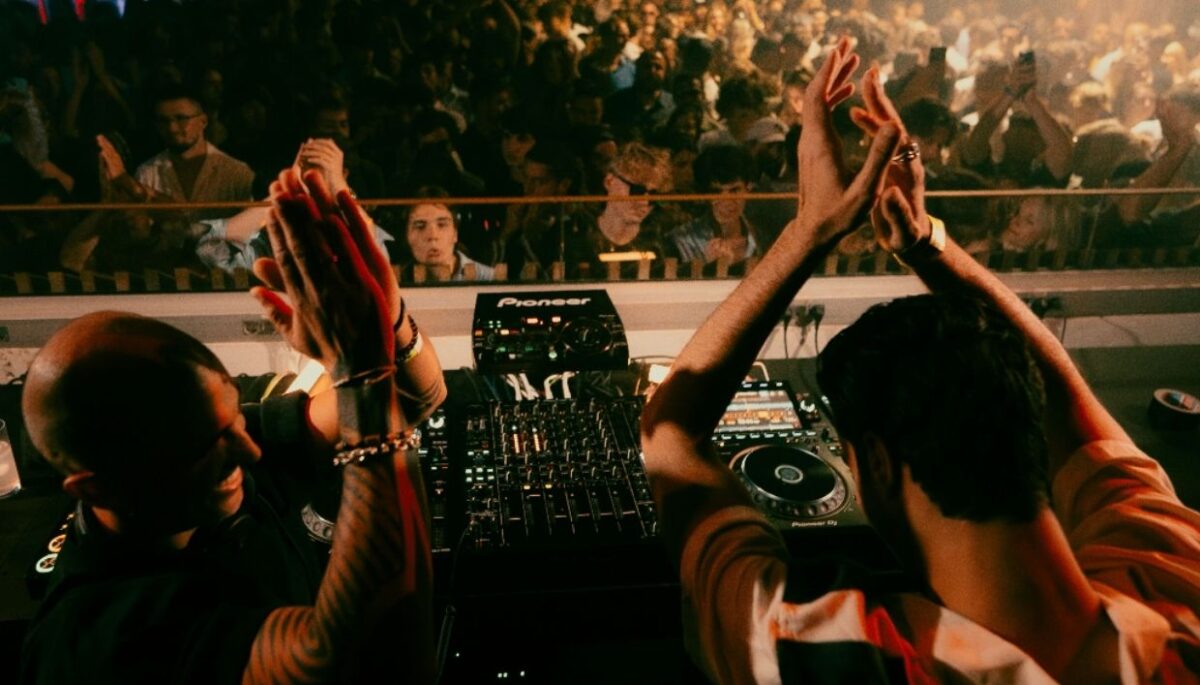
Another tip is to record longer loops with small variations. This makes the groove feel more natural and less repetitive. Adding effects like panning, delay, or reverb can also give your drums more depth. The key is to keep experimenting and not overthink it – let the groove flow.
Pro tip from Saraga: Use Maschine’s Note Repeat Function Creatively, it can add subtle rolls, ghost notes, or rhythmic flares to your grooves. Play around with different rates to add dynamic movement and energy.
Making percussion that comes alive
A special thanks to Saraga for joining us and sharing his approach to transforming a standard drum groove into something next-level using Maschine.
The key takeaway is that while house music relies on a predictable 4/4 pattern, it’s the creative use of the space between kicks, hats, and claps that makes the drum groove come alive. Humanized syncopation and unique drum sound design are what elevate a basic groove to a professional level.
Thanks again to Saraga for discussing how Maschine’s functionality is pivotal to his sound, studio workflow, and Stardust Records.
